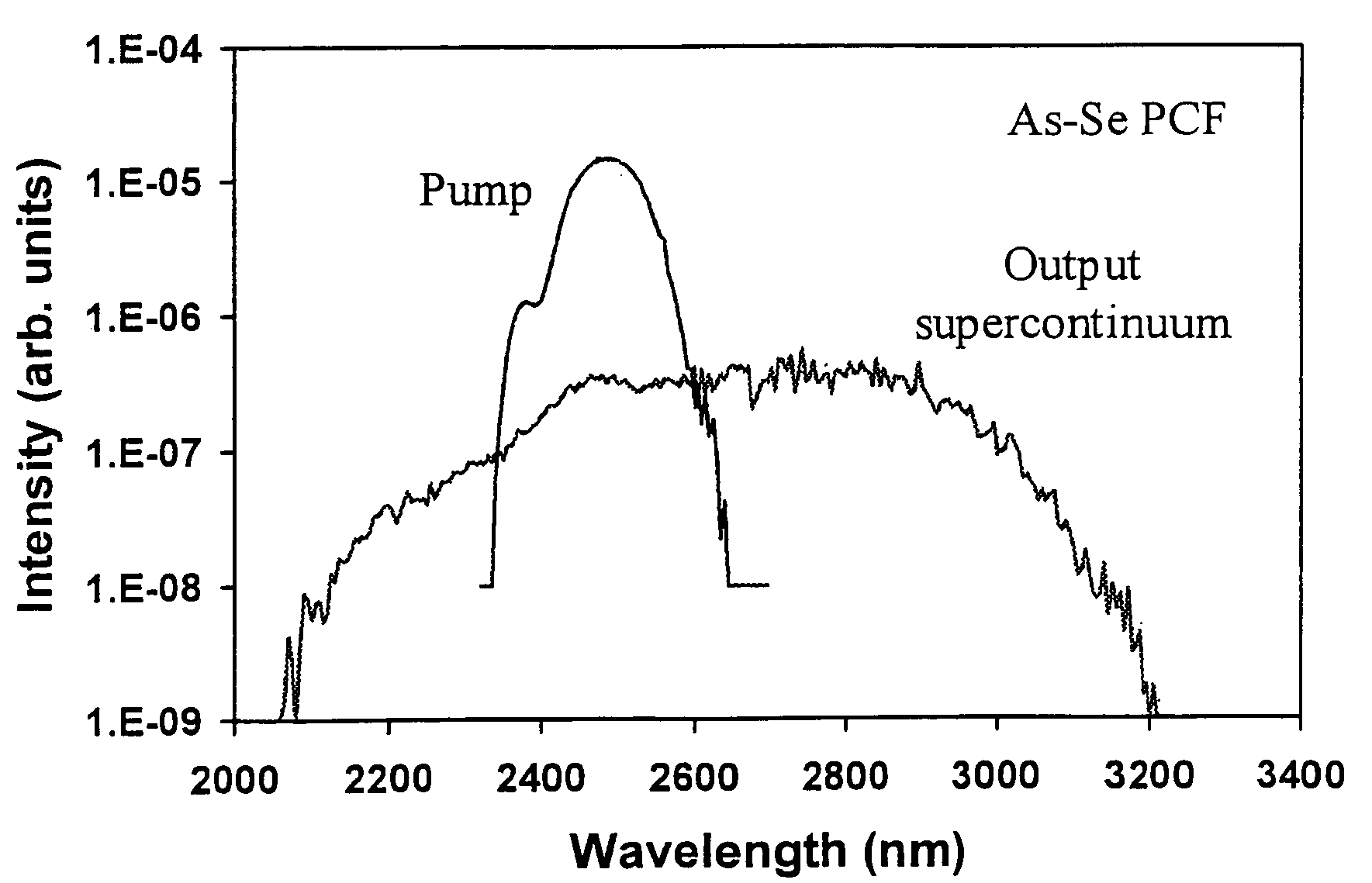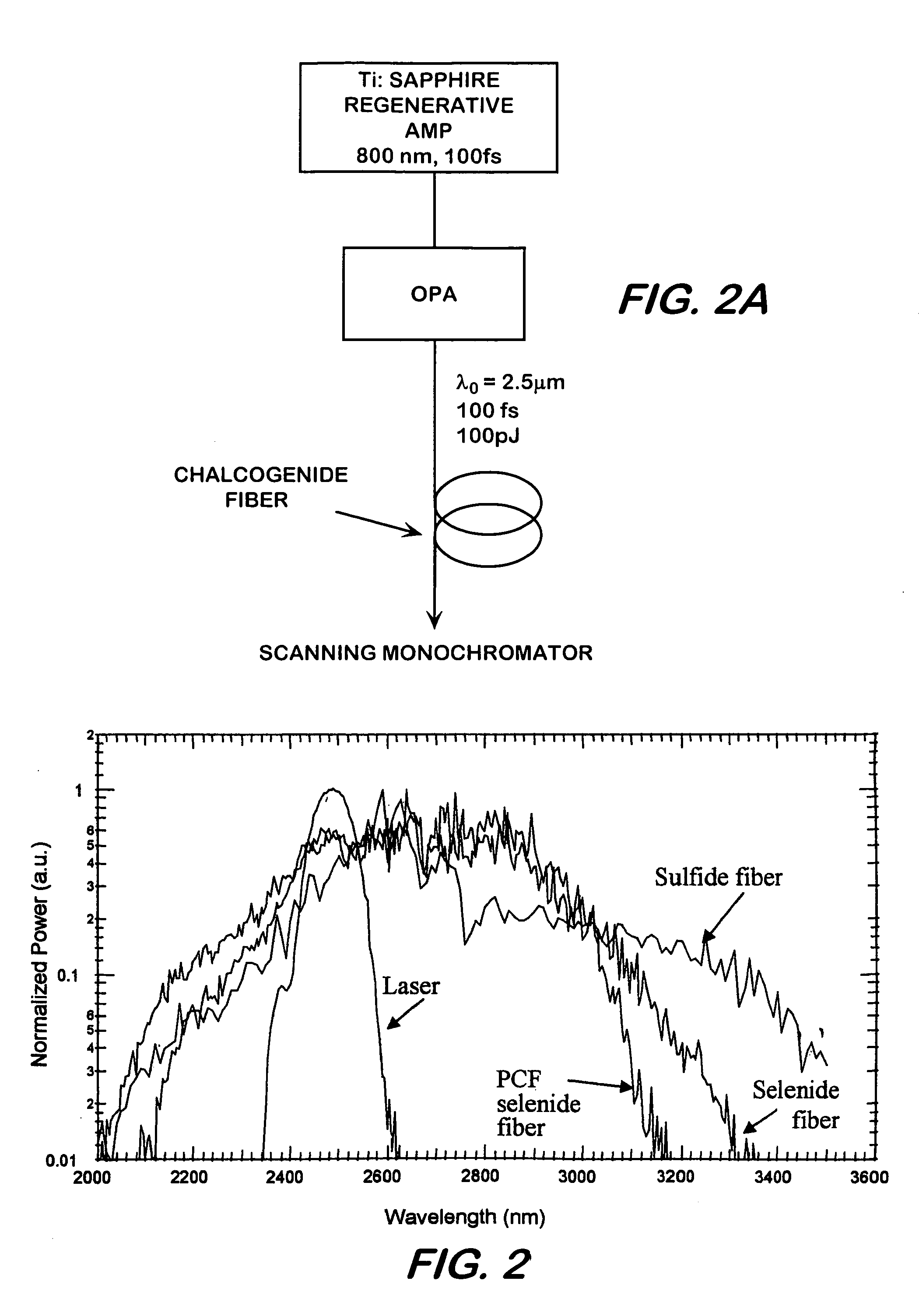IR supercontinuum source
a supercontinuum source and source technology, applied in the field of optical supercontinuum generation, can solve the problems of increasing nonlinearities in fibers, limiting the transmission window in infrared, and the multiphonon edge of silica glass, so as to achieve the effect of reducing the bandwidth of ligh
- Summary
- Abstract
- Description
- Claims
- Application Information
AI Technical Summary
Benefits of technology
Problems solved by technology
Method used
Image
Examples
example 1
[0047]This example demonstrates generation of a supercontinuum using a photonic crystal As—Se glass fiber with a pulse laser light source.
[0048]An infrared supercontinuum source consisted of a short pulse infrared pump source and a section of chalcogenide photonic crystal fiber whose dispersion minimum was at a wavelength of about 6 μm, as calculated, was matched as well as it could be to the wavelength of the pump source. FIG. 3 shows a schematic of the supercontinuum source wherein pump wavelength was 2500 nm, 80 fs pulses at power of less than 1 μJ per pulse. The chalcogenide fiber in the supercontinuum source was As—Se based photonic crystal fiber whose cross-section is shown in FIG. 1. The photonic crystal fiber O.D. was about 130 μm and the core size was about 10 μm. Fiber optical loss at 1.5 μm was 4.8 dB / m and the NA was about 0.45. As—Se fiber is highly transmissive in the infrared out to about 11 μm and thus, the generated supercontinuum shown in FIG. 4 was not limited by ...
example 2
[0050]This example demonstrates generation of a supercontinuum using a solid core As—Se glass fiber and a pulsed laser light source.
[0051]The same laser pump source was used here as in Ex. 1, operating at about 2500 μm. The pump was launched into 1 meter length As—Se glass fiber with a core size of about 7 μm and the optical fiber loss was on the order of about 1 dB / m at 1.5 μm wavelength. FIG. 5 shows the bandwidth of the supercontinuum at the output of the fiber.
example 3
[0052]This example demonstrates generation of a supercontinuum using a solid core of about 7 μm in diameter. As—Se glass fiber and a continuous wave laser.
[0053]FIG. 6 shows a broadband supercontinuum extending from about 5900 nm to about 6500 μm generated in an As—Se solid core from a continuous wave CO laser pump at about 5400 nm.
PUM
 Login to View More
Login to View More Abstract
Description
Claims
Application Information
 Login to View More
Login to View More - R&D
- Intellectual Property
- Life Sciences
- Materials
- Tech Scout
- Unparalleled Data Quality
- Higher Quality Content
- 60% Fewer Hallucinations
Browse by: Latest US Patents, China's latest patents, Technical Efficacy Thesaurus, Application Domain, Technology Topic, Popular Technical Reports.
© 2025 PatSnap. All rights reserved.Legal|Privacy policy|Modern Slavery Act Transparency Statement|Sitemap|About US| Contact US: help@patsnap.com



